Professional, peer-reviewed papers explaining and defending young-earth creationism biblically and scientifically
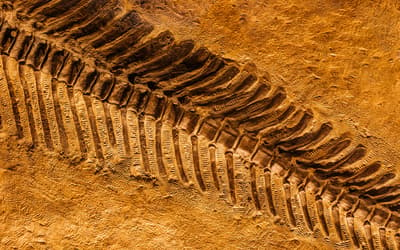
Biostratigraphy Is Inevitable
Nathan W. Mogk • Dec. 10, 2025
Fossil records with different ordering styles (true or process order, etc.), degree of ordering, and per-column fossil density were simulated, then the resulting timescales were compared.

Creation and Time in the Early Church Fathers: Looking to the Patristics for Guidance in the Genesis Debate
Jonathan E. Cook • Nov. 5, 2025
This study examines early Church Fathers’ writings on three meanings of “day,” noting only the 24-hour view endures in modern Protestant thought.

Radiohalos in the Grand Canyon Precambrian Crystalline Basement Rocks. Part 2. The Schists
Dr. Andrew A. Snelling • July 30, 2025
This study of the schists that host Grand Canyon’s Precambrian crystalline basement assesses the significance of the Po radiohalos within the earth’s history, especially within the biblical framework.
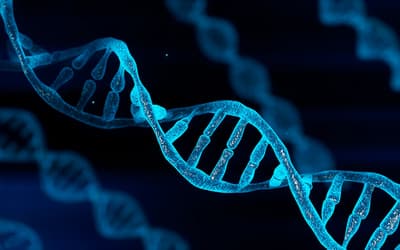
Y-Chromosome-Guided Analysis of Mitochondrial DNA Lineages in the Americas: New Evidence for a Mitochondrial DNA Root, for a Mitochondrial DNA Clock, and for at Least One Migration from Asia into the Americas in the First Millennium BC
Dr. Nathaniel T. Jeanson • July 16, 2025
In this study, Dr. Jeanson replicates his Y chromosome findings in the field of human mitochondrial DNA and shows new evidence for a mtDNA root and for the validity of mtDNA as a molecular clock.
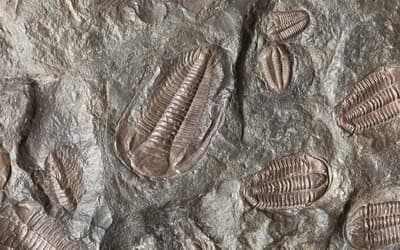
Lagerstätten: Where Creationist and Secular Studies Coincide
Warren H. Johns • June 4, 2025
Creationists are beginning to recognize Lagerstätten as important sites as they are indicators of rapid burial and thus catastrophic activity throughout the fossil record.

Response to: “The Promises and Pitfalls of Correlating Y Chromosome Genetics to Human History, Review of: Traced: Human DNA’s Big Surprise by Nathaniel T. Jeanson”
Dr. Nathaniel T. Jeanson • March 26, 2025
Dr. Jeanson responds to a critique of his Traced from Dr. Carter.

The Tharthar Depression is Not the Escarpment: Reply to Griffith and White
Anne Habermehl • March 19, 2025
There are implications for the location of the Tower of Babel.
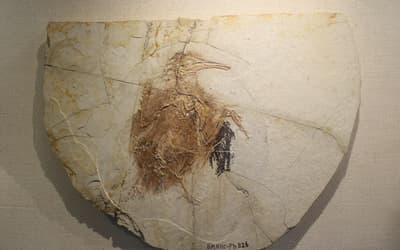
Are Birds Dinosaurs? A Critical Analysis of Fossil Findings
Reinhard Junker • April 24, 2024
The putative descent of birds from dinosaurs has become established as one of the most popular evolutionary transitions.

Where in the World Is the Tower of Babel? Comments
A. John M. Osgood • March 13, 2024
This is the first of a three-part series. This first paper discusses Habermehl’s 2011 paper, “Where in the World is the Tower of Babel?”

Thermodynamics and its Relation to Creation/Evolution: An Introduction
Dr. Danny R. Faulkner • March 6, 2024
Creationists have often used the 2nd law of thermodynamics to criticize naturalistic origins, but they have not always properly treated the subject.

The Whitmore Helipad Fold, Western Grand Canyon, Arizona
Dr. Andrew A. Snelling • Feb. 28, 2024
The Bright Angel Formation beds easily responded to soft-sediment deformation to form the smooth bending in the Whitmore Helipad fold.

Reply to the “Response to ‘The Debate over Classification of Archaeopteryx as a Bird’”
Dr. Gabriela Haynes • Dec. 6, 2023
This paper aims to address some issues raised by McLain et al. (2023) in an article titled “Response to ‘The Debate over Classification of Archaeopteryx as a Bird.’”

Response to “The Debate over Classification of Archaeopteryx as a Bird”
Matthew McLain , et. al. • Dec. 6, 2023
Matthew McLain, Dr. Marcus Ross, Matt Petrone, Noël Lay, and Matthew Speights take issue with Dr. Gabriela Haynes’ 2022 discussion of the difference between birds and dinosaurs.
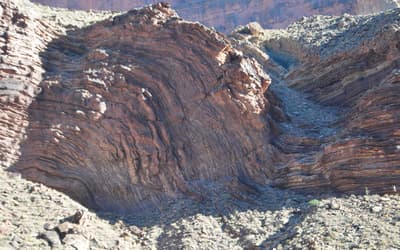
The Monument Fold, Central Grand Canyon, Arizona
Dr. Andrew A. Snelling • Aug. 9, 2023
Because the Tapeats Sandstone beds were still relatively unlithified and soft less than a year after rapid burial, they easily responded to soft-sediment deformation.
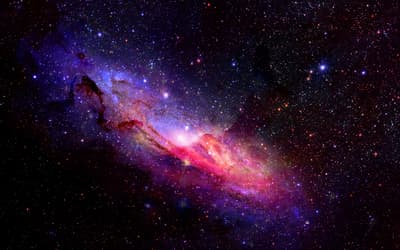
Mach’s Principle in General Relativity and Reduced Light Travel Times in Cavitated Cosmologies
Dr. Phillip W. Dennis • Oct. 26, 2022
We explore the effect of cosmic voids on the light-travel-time-problem (LTTP) in a young age creationist (YAC) cosmology.

The Debate over Classification of Archaeopteryx as a Bird
Dr. Gabriela Haynes • Sept. 14, 2022
Based on several findings, no reason remains for Archaeopteryx to be classified as anything other than a bird.

Facts Cannot Be Ignored When Considering the Origin of Life #1: The Necessity of Bio-monomers Not to Self-Link for the Existence of Living Organisms
Change Laura Tan • March 9, 2022
The required automatic self-linking of monomers for abiogenesis is incompatible with the genetic information coding and decoding system that is necessary for life.

The Evolution of Asexual to Sexual Reproduction: The Queen of Evolutionary Problems
Dr. Jerry Bergman • Dec. 15, 2021
The evidence is overwhelming and widely recognized by evolutionists that evolution by small steps cannot bridge the transition from asexual to sexual reproduction.

Revising Hominin Baraminology with Medoid Partitioning and Fuzzy Analysis
P. Sinclair , et. al. • Nov. 3, 2021
Creationist disagreement over the status of hominin fossils is unlikely to be resolved here, but Reeves’s recommendations bring alternative tools to baraminology that have not been applied.
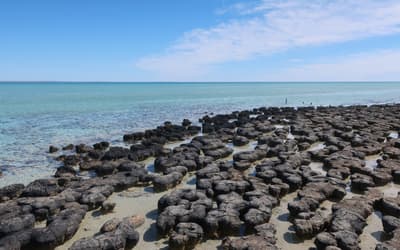
Using Stromatolites to Rethink the Precambrian-Cambrian Pre-Flood/Flood Boundary
Ken P Coulson • May 5, 2021
Many creationists are actively engaged in finding the Flood/post-Flood boundary, but most creationists consider the Precambrian-Cambrian contact more attractive.

Theistic Evolution: A Response to Wayne Grudem, Making the Same Errors He Opposes in Others
Dr. Terry Mortenson • Feb. 17, 2021
Grudem is making the same biblical and theological errors that theistic evolutionists make. To be biblically consistent, he must abandon his old-earth position.

The Grand Canyon, Monument to an Ancient Earth: The Deceptions Continue
Dr. Terry Mortenson • Dec. 2, 2020
The Grand Canyon, Monument to Ancient Earth? rejects the truth of Genesis regarding the Flood and the age of the earth.

Louis Agassiz and Alexander Winchell: Two Case Histories of Creationists Who Illustrate That Rejecting Genesis Influences the Acceptance of Racism
Dr. Jerry Bergman • Sept. 23, 2020
Theories that attempted to harmonize evolution and the Scriptures gave birth to, and perpetuated, a form of scientific racism based on Darwinism.

Inerrancy and Biblical Authority: How and Why Old-Earth Inerrantists Are Unintentionally Undermining Inerrancy
Dr. Terry Mortenson • Sept. 16, 2020
The old-earth signers of the CSBInerrancy unintentionally violated their own principles of interpretation and unintentionally undermined the inerrancy and the authority of Scripture.

Effects of the Fall on the Physical Creation: A Biblical Analysis
Zachary Klein , et. al. • Aug. 12, 2020
To interpret the natural world through the lens of Scripture, one must have a correct understanding of the Fall and its effects on the physical creation.

Heat Problems Associated with Genesis Flood Models—Part 3: Vapour Canopy Models
William Worraker • Aug. 5, 2020
The biblical and scientific arguments for a pre-Flood vapour canopy do not support the theory.
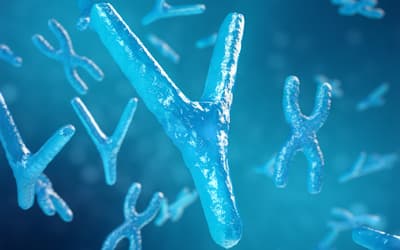
Young-Earth Y Chromosome Clocks Confirm Known Post-Columbian Amerindian Population History and Suggest Pre-Columbian Population Replacement in the Americas
Dr. Nathaniel T. Jeanson • April 22, 2020
Recent human history represents a novel arena in which to comparatively test evolution and young-earth creation (YEC) against each other.

Testing the Predictions of the Young-Earth Y Chromosome Molecular Clock: Population Growth Curves Confirm the Recent Origin of Human Y Chromosome Differences
Dr. Nathaniel T. Jeanson • Dec. 4, 2019
The timescale for the human Y chromosome family tree has been a source of sharp disagreement within the creation/evolution debate.

Evidence for a Human Y Chromosome Molecular Clock: Pedigree-Based Mutation Rates Suggest a 4,500-Year History for Human Paternal Inheritance
Dr. Nathaniel T. Jeanson , et. al. • Dec. 4, 2019
Pedigree-based mutation rates act as an independent test of the young-earth creation and evolutionary timescales.

Problems with the U-Pb Radioisotope Dating Methods—3. Mass Fractionation
Dr. Andrew A. Snelling • Nov. 13, 2019
The evidence for grossly accelerated radioisotope decay during a past cataclysmic event such as the Genesis Flood has been well established.

An Evaluation of Astronomical Young-Age Determination Methods 2: Solar, Stellar, Galactic, and Extragalactic
Dr. Danny R. Faulkner • Oct. 30, 2019
Dr. Danny Faulkner evaluates 23 arguments for recent origin for the sun, stars, and galaxies.

An Evaluation of Astronomical Young-Age Determination Methods I: The Solar System
Dr. Danny R. Faulkner • Sept. 25, 2019
Evaluating 25 astronomical arguments for recent origin for the solar system found some to be wanting and others appear to be sound.

How Scholars’ Perceptions of the Semantic Range of יוֹם Have Affected Their Discussions of the Age of the Universe: Part 3
John C. P. Smith • July 17, 2019
The study looks at delineations and definitions of יוֹם in Scripture, and in lexical and other sources.

How Scholars’ Perceptions of the Semantic Range of יוֹם Have Affected Their Discussions of the Age of the Universe: Part 2
John C. P. Smith • April 24, 2019
There is a considerable disconnection between lexicography regarding יוֹם and the formation of creation theology.

How Scholars’ Perceptions of the Semantic Range of יוֹם Have Affected Their Discussions of the Age of the Universe: Part 1
John C. P. Smith • March 13, 2019
There is a considerable disconnection between lexicography regarding יוֹם and the formation of creation theology.

Critical Analysis of Hugh Ross’ Progressive Day-Age Creationism Through the Framework of Young-Earth Creationism
David McGee • Feb. 13, 2019
The most important part of the debate between views on creationism is about the presuppositions of each group and their biblical hermeneutics.
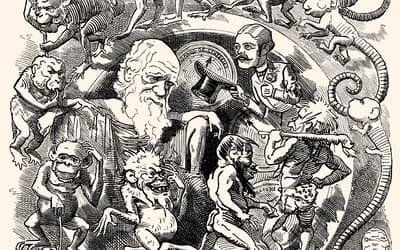
Response to “Still No Replacement of Darwin: A Reply to Nathaniel Jeanson’s Response to My Review of Replacing Darwin—The New Origin of Species”
Dr. Nathaniel T. Jeanson • Nov. 21, 2018
Frello’s recent critique is helpful progress in our discussion, and it argues for the strength of the science in Replacing Darwin.

Still No Replacement of Darwin—A Reply to Nathanial Jeanson’s Response to my Review of Replacing Darwin—The New Origin of Species
Stefan Frello • Nov. 21, 2018
I used to think that when creationists talk about creation and evolution as a clash between worldviews, they were wrong. Jeanson has helped me change my mind.
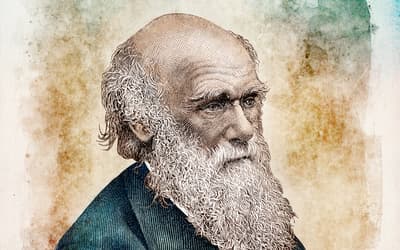
Response to “No Replacement of Darwin: A Review of Replacing Darwin—The New Origin of Species”
Dr. Nathaniel T. Jeanson • April 25, 2018
Ironically, Frello has actually done me a great favor; his review ends up bolstering my original claims.

Are Old Supernova Remnants Really Missing? Re-Evaluating a Well-Known Young-Universe Argument
Dr. Danny R. Faulkner • Oct. 25, 2017
There are old supernova remnants and stage three supernova remnants have been identified. Therefore, this may not be a good argument for recent origin.

Response to “Reply to ‘Response to ‘On the Creationist View on mtDNA’.”
Dr. Nathaniel T. Jeanson • Oct. 4, 2017
I am pleased to see that the young-earth creation (YEC) critic, Stefan Frello, seeks to continue our exchange of ideas.

Reply to “Response to ‘On the Creationist View on mtDNA’.”
Stefan Frello • Oct. 4, 2017
This is a short reply to Dr. Nathaniel Jeanson’s response to my comment to his work on human mtDNA.

Phenomenological Language and Semantic Naïveté
Kevin Short • June 28, 2017
Denis Lamoureux seeks to resolve perceived contradictions between science and Scripture by persuading that Scripture is not inerrant.

Determination of the Decay Constants and Half-Lives of Uranium-238 (238U) and Uranium-235 (235U), and the Implications for U-Pb and Pb-Pb Radioisotope Dating Methodologies
Dr. Andrew A. Snelling • Jan. 18, 2017
Without accurately known decay half-lives, all radioisotope ages cannot be accurately determined or be considered absolute ages.

Do Varves, Tree-Rings, and Radiocarbon Measurements Prove an Old Earth?
Dr. Jake Hebert , et. al. • Dec. 7, 2016
The BioLogos Foundation published a popular-level article by old-earth geologists Gregg Davidson and Ken Wolgemuth presenting arguments for an old earth.

Scriptural Geology, Then and Now
Warren H. Johns • Nov. 30, 2016
The place of the biblical Flood in the geological record remains one of the most hotly debated issues among creationist geologists today.

The Nature of the Neo-Darwinian Evangelicals’ Criticism of Young-Earth Creationists
Jim Owen • Nov. 23, 2016
If we do not understand the dimensions of the war we are engaged in, we are already halfway to theological and historical oblivion.

A Critique of Scientific Explanations of Belief and Unbelief and the Conflict between Evolution and Creationism
Callie Joubert • Nov. 2, 2016
The recent claim that “conflicting networks” in the brain that explain belief and unbelief in God cannot be true.
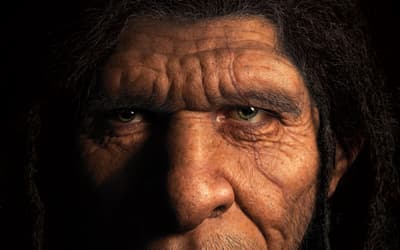
Homo naledi Probably Not Part of the Human Holobaramin Based on Baraminic Re-Analysis Including Postcranial Evidence
Jean O’Micks • Oct. 26, 2016
With the inclusion of 37 postcranial morphological characters, this work attempts to reassess the baraminic classification of H. naledi.

An Exponential Decay Curve in Old Testament Genealogies
Philip M. Holladay • Oct. 19, 2016
The lifespans of Old Testament people born after the Flood reveal a numerical pattern known as an exponential decay curve.
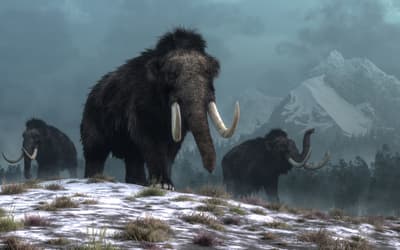
Revisiting an Iconic Argument for Milankovitch Climate Forcing: Should the “Pacemaker of the Ice Ages” Paper Be Retracted? Part 3
Dr. Jake Hebert • Sept. 14, 2016
Despite its popularity, the Milankovitch hypothesis has many problems that are acknowledged even by secular scientists (Cronin 2010, 130–139).
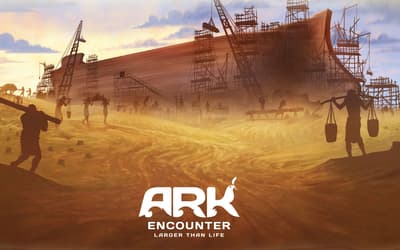
The Last Week before the Flood
Dr. Steven W. Boyd • Aug. 17, 2016
While attempting to elucidate the general chronological profile of the events of the first week, we hope to answer two specific significant questions.

Comments on Ussher’s Date of Creation
Dr. Danny R. Faulkner • July 20, 2016
Ussher’s date of creation of October 23, 4004 BC appears to rely upon two questionable assumptions.

Big Gaps and Short Bridges: A Model for Solving the Discontinuity Problem
Change Laura Tan • July 6, 2016
This paper argues that the issue with the origin of life and the origin of biodiversity is not an issue of time, though deep time is problematical.

Revisiting an Iconic Argument for Milankovitch Climate Forcing: Should the “Pacemaker of the Ice Ages” Paper Be Retracted? Part 2
Dr. Jake Hebert • May 25, 2016
Part I of this series presented a number of serious problems with the Pacemaker paper. It is necessary to also understand the Blackman-Tukey (B-T) method.

On the Origin of Human Mitochondrial DNA Differences, New Generation Time Data Both Suggest a Unified Young-Earth Creation Model and Challenge the Evolutionary Out-of-Africa Model
Dr. Nathaniel T. Jeanson • April 27, 2016
These results underscore the biblical model of human origins and simultaneously undercut the validity of the evolutionary out-of-Africa model.

On the Origin of Eukaryotic Species’ Genotypic and Phenotypic Diversity
Dr. Nathaniel T. Jeanson , et. al. • April 20, 2016
This study shows that created heterozygosity, together with natural processes that are observable, is sufficient to account for species’ diversity.

New Method to Assess the Luminosity Function of Galaxies
Dr. Jason Lisle • March 30, 2016
We find that small variations in galaxy density as a function of redshift do exist, and are not due to the Malmquist bias.
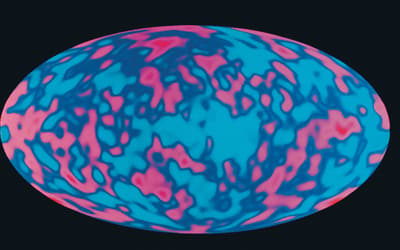
Thoughts on the rāqîa‘ and a Possible Explanation for the Cosmic Microwave Background
Dr. Danny R. Faulkner • March 23, 2016
Dr. Danny Faulkner proposes that Genesis 1:1 is an introductory encapsulation that establishes a foundation for building a biblical model of astronomy.

Revisiting an Iconic Argument for Milankovitch Climate Forcing: Should the “Pacemaker of the Ice Ages” Paper Be Retracted? Part 1
Dr. Jake Hebert • March 9, 2016
This paper, the first in a series, demonstrates that much of the Hays et al. paper, as originally presented, is invalid.

Numerical Modeling of the Large-Scale Erosion, Sediment Transport, and Deposition Processes of the Genesis Flood
Dr. John Baumgardner • Feb. 24, 2016
Accounting for thick sediment sequences blanketing the surfaces of the continents is a paramount issue for understanding physical aspects of the Genesis Flood.
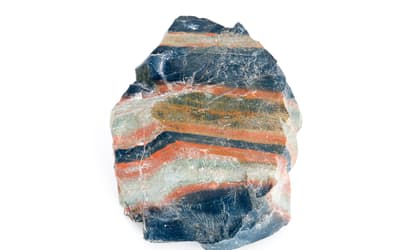
Terrestrial Vertebrates Dissolved Near Flood Fountains
Harry Dickens , et. al. • Nov. 18, 2015
Terrestrial vertebrates close to the Flood fountains dissolved then precipitated out to form Precambrian-Cambrian sedimentary phosphate deposits.

Challenging the BioLogos Claim that a Vitellogenin (Egg-Laying) Pseudogene Exists in the Human Genome
Jeffrey P. Tomkins • Oct. 21, 2015
Interestingly, BioLogos is probably the only evolutionary group that puts such a high level of focus on this hypothesis as key evidence for evolution.

The Genesis and Emergence of Community-Associated Methicillin-Resistant Staphylococcus aureus (CA-MRSA): An Example of Evolution in Action?
Dr. Alan L. Gillen , et. al. • Oct. 14, 2015
We have seen a changing profile from HA-MRSA to CA-MRSA. This is potentially dangerous because the new strains are more virulent and aggressive.

Documented Anomaly in Recent Versions of the BLASTN Algorithm and a Complete Reanalysis of Chimpanzee and Human Genome-Wide DNA Similarity Using Nucmer and LASTZ
Jeffrey P. Tomkins • Oct. 7, 2015
Past evolutionary research in comparative DNA analysis between chimps and humans has employed a great deal of preferential and selective data analysis.
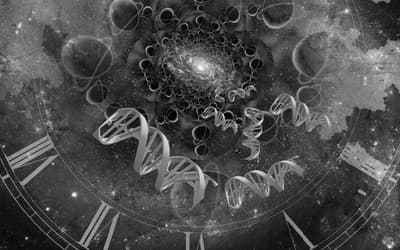
A Young-Earth Creation Human Mitochondrial DNA “Clock”: Whole Mitochondrial Genome Mutation Rate Confirms D-Loop Results
Dr. Nathaniel T. Jeanson • Sept. 23, 2015
New data agree with the expectations from D-loop results, further confirming the origin of humans within 6000 years and rejecting evolutionary timescales.

The Lost World of Adam and Eve: A Response
Steve Ham • July 29, 2015
This paper contends that Walton has given a magisterial authority to the ANE mythic texts in order to interpret the Genesis accounts.
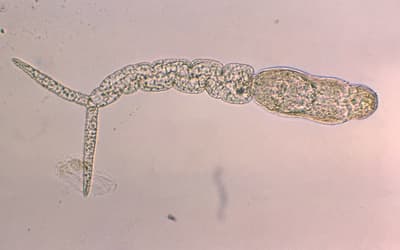
A Baraminic Study of the Blood Flukes of Family Schistosomatidae
Dr. Matthew E. Ingle , et. al. • June 24, 2015
This paper aims to determine the number of created kinds in this family of parasites, the original hosts, and what produced current species.

Determination of the Radioisotope Decay Constants and Half-Lives: Samarium-147 (147Sm)
Dr. Andrew A. Snelling • June 10, 2015
Over the last 80 years numerous determinations have been made of the 147Sm half-life.

Mitochondrial DNA Clocks Imply Linear Speciation Rates Within “Kinds”
Dr. Nathaniel T. Jeanson • June 3, 2015
The mechanism of speciation remains one of the most contested scientific questions among both evolutionists and creationists.

How Long Did the Flood Last?
Dr. Danny R. Faulkner • May 13, 2015
Belief that the Flood lasted 371 days is common among recent creationists, but there are other possibilities.

Cyclic Selection in HIV–1 Tropism: Microevolution That Is Going Nowhere
Yingguang Liu • April 29, 2015
The molecular interaction of HIV-1 is merely cyclic fine-tuning of an existing function and illustrates the broken relationship between the virus and the host.

Physical Difficulties with Hugh Ross’ Local Flood Model
Dr. Danny R. Faulkner • April 15, 2015
There are at least three problems with Hugh Ross’ local flood model which render it physically impossible. This is in addition to numerous biblical issues.

A Review of Hugh Ross’ Latest Book, Navigating Genesis
Dr. Danny R. Faulkner • April 15, 2015
While many Christians support Ross’ broad conclusions, few would agree with the details of Dr. Ross’ argument.

An Initial Estimation of the Numbers and Identification of Extant Non-Snake/Non-Amphisbaenian Lizard Kinds: Order Squamata
Tom Hennigan • April 8, 2015
This paper is meant to lay creation groundwork for lizard systematics with the goal of estimating the number of baramins brought on the Ark.

Can One Astronomically Date the Flood within the Hydroplate Model?
Dr. Danny R. Faulkner • April 1, 2015
Dr. Danny Faulkner analyzes Dr. Walt Brown’s determination of the date of the Flood within his hydroplate model using the orbits of two comets.

Information Processing Differences Between Bacteria and Eukarya—Implications for the Myth of Eukaryogenesis
Change Laura Tan , et. al. • March 25, 2015
Based on differences in gene sets and molecular machines between bacteria and eukarya, we continue to demonstrate that unbridgeable evolutionary chasms exist.

Information Processing Differences Between Archaea and Eukarya—Implications for Homologs and the Myth of Eukaryogenesis
Change Laura Tan , et. al. • March 18, 2015
In the grand evolutionary paradigm, the origin of the eukaryotic cell represents one of the great mysteries and key hypothetical transitions of life.

Natural Selection: Assessing the Role It Plays in our World
Dr. Jean Lightner • March 4, 2015
Natural selection is controversial among many scientists, both in evolutionary and creationary circles.
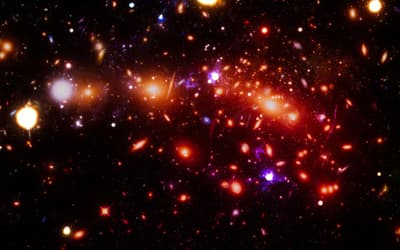
Speculation on Redshift in a Created Universe1
Dr. John G. Hartnett • Feb. 11, 2015
Dr. Hartnett speculates about the idea that what we observe in the universe is not in equilibrium; that is, the state of the universe is in a transient state.

A Reply to Bruce Gordon’s Biblical Critique of Young-Earth Creationism
Ashby L. Camp • Jan. 28, 2015
Dr. Gordon recently published a critique of the claims of young-earth creation. This reply is to the biblical criticisms in his paper.

A Biblical Creationist Cosmogony
Dr. John G. Hartnett • Jan. 14, 2015
The cosmogony proposed is consistent with all creationist understandings of the biblical texts and has no light-travel time problem.

Response to: “Critique: Faulkner’s Miraculous Translation of Light Model Would Leave Evidence”
Dr. Danny R. Faulkner • Nov. 19, 2014
I am delighted that my friend, John Hartnett, has responded with some objections to my proposal for a new solution to the light travel time problem.

Critique: Faulkner’s Miraculous Translation of Light Model Would Leave Evidence
Dr. John G. Hartnett • Nov. 19, 2014
In 2013 D. R. Faulkner proposed what he says is a new solution to the biblical creationist starlight travel-time problem.

Reply to “A Response to ‘Does Natural Selection Exist?’”
Dr. Nathaniel T. Jeanson • Nov. 5, 2014
In this three-part ~35,000-word response, Guliuzza (2014a, b, c) fails to clearly define his terms and/or use them consistently.

A Response to “Does Natural Selection Exist?”: Creatures’ Adaptation Explained by the Design-based, Organism-driven Approach: Part 3
Randy J. Guliuzza • Nov. 5, 2014
This third installment is a continuation of my response to a recent critical paper (Jeanson 2013).

A Response to “Does Natural Selection Exist?”: Creatures’ Adaptation Explained by the Design-based, Organism-driven Approach: Part 2
Randy J. Guliuzza • Oct. 29, 2014
This second installment is a continuation of my response to a recent critical paper (Jeanson 2013) on a series of Acts & Facts articles.
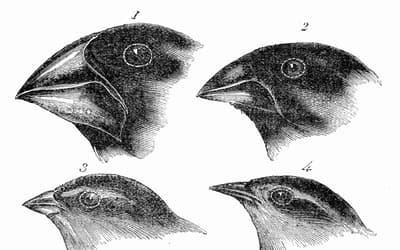
A Response to “Does Natural Selection Exist?”: Creatures’ Adaptation Explained by the Design-based, Organism-Driven Approach: Part 1
Randy J. Guliuzza • Oct. 29, 2014
This paper responds to a 2013 Jeanson paper critical of a series of Acts & Facts articles published by the Institute for Creation Research (ICR).

Old Earth Theology: A Factor that Explains Inconsistent Belief of Inerrancy Among Florida Southern Baptists
David McGee • Oct. 1, 2014
A major shift in thinking seems to be occurring in contemporary evangelical thinking.

Fossil Baramins on Noah’s Ark: The “Amphibians”
Dr. Marcus Ross • Sept. 17, 2014
When added to previously determined kinds of extant anurans, caudates, and gymnophionans, a total of 248 amphibian kinds may have been brought on board the Ark.
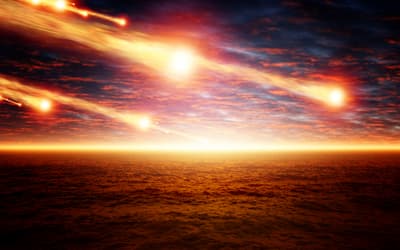
Evaluating The Day Four Cratering Hypothesis
Wayne Spencer • Sept. 10, 2014
Creationists have recently considered impact cratering in the solar system occurring during the fourth day of the Creation Week.

Circular Reasoning in the Dating of Deep Seafloor Sediments and Ice Cores: The Orbital Tuning Method
Dr. Jake Hebert • Aug. 27, 2014
The different dating systems are calibrated to one another: dates assigned to the seafloor sediments are used to date the ice cores, and vice versa.

Anomalies with Planets and Satellites in the Solar System—Indication of Design?
Dr. Danny R. Faulkner • June 25, 2014
The evolutionary theory cannot explain certain aspects of solar system bodies. There have been few comprehensive proposals for a creationary model.

A Photon Reference Frame and Distant Starlight: Analyzing Ideas from Gerald L. Schroeder’s The Science of God
Andrew Sibley • May 14, 2014
This paper reviews claims made by Gerald L. Schroeder in relation to the nature of light and the age of the universe.
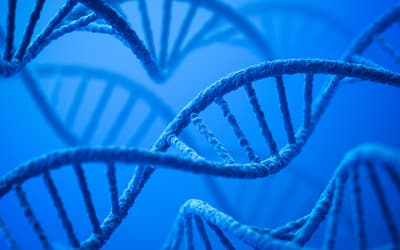
The Human GULO Pseudogene—Evidence for Evolutionary Discontinuity and Genetic Entropy
Jeffrey P. Tomkins • April 2, 2014
Modern genomics provides the ability to screen the DNA of a wide variety of organisms to scrutinize broken metabolic pathways. This data has revealed wide-spread genetic entropy in human genomes.

An Initial Estimate toward Identifying and Numbering Extant Tuatara, Amphisbaena, and Snake Kinds
Tom Hennigan • Feb. 19, 2014
The purpose of this paper is to use all available information in order to make an initial estimate of the identification and numbers of extant Lepidosaur kinds, except for the “lizards.”
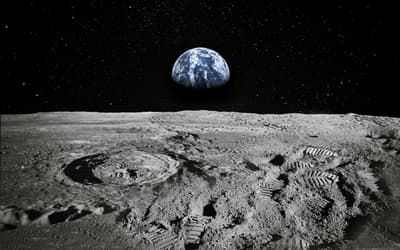
Interpreting Craters in Terms of the Day Four Cratering Hypothesis
Dr. Danny R. Faulkner • Jan. 22, 2014
In recent years there has been increasing discussion of craters within the creation paradigm.

An Initial Estimate toward Identifying and Numbering the Ark Turtle and Crocodile Kinds
Tom Hennigan • Jan. 8, 2014
Biosystematics is in great flux today because of the plethora of genetic research continually shedding light on organism relationships.
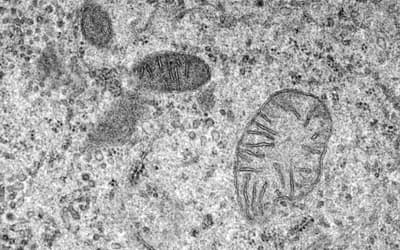
Recent, Functionally Diverse Origin for Mitochondrial Genes from ~2700 Metazoan Species
Dr. Nathaniel T. Jeanson • Dec. 11, 2013
The young-earth creation model currently lacks a robust explanation for molecular diversity.

An Initial Estimate of Avian Ark Kinds
Dr. Jean Lightner • Nov. 27, 2013
This paper will focus on identifying extant bird kinds.

The Second Law of Thermodynamics and the Curse
Dr. Danny R. Faulkner • Nov. 13, 2013
Many recent creationists believe that the second law of thermodynamics came into being as a result of the Fall or the curse. I argue that this is not supported by Scripture nor science.

Jesus, Scripture and Error: An Implication of Theistic Evolution
Simon Turpin • Oct. 30, 2013
The very teachings of Jesus are being attacked by those who state that, because of His human nature, there is error in some of His teaching regarding earthly things such as creation.

Astronomical Distance Determination Methods and the Light Travel Time Problem
Dr. Danny R. Faulkner • June 12, 2013
Some recent creationists have attempted to address the light travel time problem indirectly with an implied appeal to a small universe.

The Importance of an Historical Adam
Simon Turpin • May 29, 2013
In secular culture it is common to view the biblical history of Adam as a story, myth, or a parable but this is now also becoming the standard interpretation for many within the evangelical community.

Did Death of Any Kind Exist Before the Fall?
Simon Turpin • April 3, 2013
Death, whether animal or human, physical or spiritual, is a consequence of man’s disobedience toward his Creator and an intrusion into His “very good” creation.

Evangelical Commentaries on the Days of Creation in Genesis One
Simon Turpin • March 20, 2013
This paper will evaluate and critique six commentaries and the reasons they give for not taking the days of creation literally.

An Initial Estimate Toward Identifying and Numbering Amphibian Kinds within the Orders Caudata and Gymnophiona
Tom Hennigan • Jan. 23, 2013
An initial attempt to count and identify biblical kinds in amphibian orders Caudata and Gymnophiona were estimated using current information and several key assumptions and guidelines.
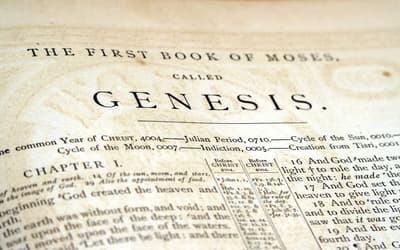
Creation Date of Adam from the Perspective of Young-Earth Creationism
David McGee • Nov. 28, 2012
This article reveals how young-earth creationists have concluded the approximate age of Adam and to explain the reason for a 6,000 year range between both groups.

Is Young-Earth Creationism a Bad Choice?
Callie Joubert • Nov. 14, 2012
Any understanding of Scripture that excludes or indicts the divine Himself is necessarily flawed and false.
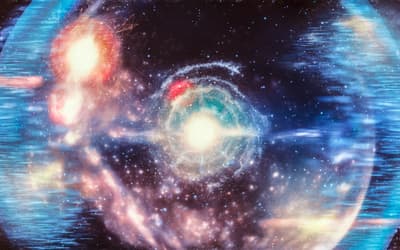
The Unbeliever at War with God: Michael Ruse and the Creation-Evolution Controversy
Callie Joubert • Sept. 5, 2012
The evidence to be considered will indicate that a fear of God and afterlife play a major role in the psychology of unbelief, and that points toward the realism of Scripture.

Parallelism in Hebrew Poetry Demonstrates a Major Error in the Hermeneutic of Many Old-Earth Creationists
Dr. Tim Chaffey • July 25, 2012
This article will provide a survey of the nature of Hebrew poetry and provide examples of the various forms of parallelism exhibited in the six poetic books of the Bible.

Theistic Evolution: An Incoherent and Inconsistent Worldview?
Callie Joubert • July 11, 2012
Christians are caught up in theistic evolutionism without realizing that the worldview of theistic evolutionism is incoherent and inconsistent with the teachings of Scripture.

Review of John Lennox’s Book Seven Days That Divide the World: The Beginning According to Genesis and Science
Simon Turpin • June 27, 2012
Lennox reasons that the church has been wrong in the past over its interpretation of Scripture in light of scientific discovery, and that those holding to a young earth are wrong again.

What Makes Us Human, and Why It Is Not the Brain: A Creationist Defense of the Soul: Reply
Callie Joubert • June 13, 2012
To depart from Scripture at any point is neither safe nor right. Thus Estabrook’s discussion of my paper (Joubert 2011) in which he expressed his difficulties with my defense of the soul is welcome.

What Makes Us Human, and Why It Is Not the Brain: A Creationist Defense of the Soul: Discussion
Darrell Estabrook • June 13, 2012
Certainly there is more to humans than a complex brain architecture from which a mind would seem to emerge. However, this reader has two difficulties.

Understanding the Nature of Scripture, of Jesus, and the “Dis-Ease” of Theistic Evolutionists (BioLogos)
Callie Joubert • May 9, 2012
The apologetic suggests that BioLogos should consider that the ultimate source of their “dis-ease” is the nature and character of the Creator.
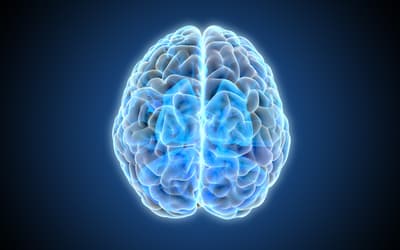
Can Theistic Evolutionism Explain the Origin of Morality?
Callie Joubert • March 14, 2012
Theistic evolutionism is not only inconsistent with Scripture but also philosophically incoherent.

An Evaluation of the Myth That “Nothing in Biology Makes Sense Except in the Light of Evolution”
Dr. Jerry Bergman • Feb. 8, 2012
I reviewed both the textbooks used for life science classes at the college where I teach and those that I used in my past university course work.

Genome-Wide DNA Alignment Similarity (Identity) for 40,000 Chimpanzee DNA Sequences Queried against the Human Genome is 86–89%
Jeffrey P. Tomkins • Dec. 28, 2011
To provide a global set of analyses, large-scale comparative DNA sequence alignments between the chimpanzee and human genomes were performed with the BLASTN algorithm.

What Makes Us Human, and Why It Is Not the Brain: A Creationist Defense of the Soul
Callie Joubert • Dec. 14, 2011
A Christian view of the world entails that science is not a Christian’s ultimate or sole source of knowledge and the physical world is not the only world there is.

Untangling Uniformitarianism, Level II: Actualism in Crisis
Dr. John K. Reed • Nov. 30, 2011
Although the term uniformitarianism was not introduced until 1832, the concepts that Lyell so cleverly fused together had already been operating in the nascent discipline of geology for some decades
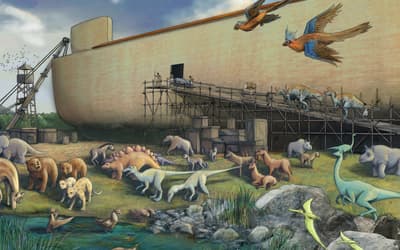
Determining the Ark Kinds
Dr. Jean Lightner , et. al. • Aug. 1, 2014
This research effort provides information necessary for the best possible reconstruction of the animal kinds preserved on the Ark for the Ark Encounter.

Adam, Free Choice, and the Cause of Sin: A Creationist Response to a Christian Evolutionist
Callie Joubert • Oct. 26, 2011
This paper will show that Christian professor Daniel Brannan’s arguments are based on faulty premises regarding Adam’s constitutional nature, the nature of Adam’s perfection and Adam’s free choice.
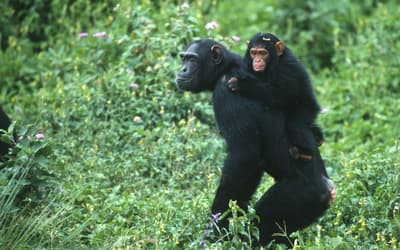
Response to Comments on “How Genomes are Sequenced and Why it Matters: Implications for Studies in Comparative Genomics of Humans and Chimpanzees”
Jeffrey P. Tomkins • Sept. 14, 2011
The author believes that his use of the Y-chromosome comparison example was misinterpreted and desires to clarify.

Created Kinds and Essential Natures: A Biblical and Philosophical Response to Evolutionists
Callie Joubert • July 27, 2011
Assuming that “natural kind” is a merely biological rather than metaphysical would be a mistake, resulting in Christians having difficulty evaluating and correcting rival views to created kinds.

An Examination of Augustine’s Commentaries on Genesis One and Their Implications on a Modern Theological Controversy
Dr. Tim Chaffey • July 13, 2011
Few individuals in church history are as popular as Augustine of Hippo. Old-earthers claim him as support for figurative interpretations of Genesis 1. But what did Augustine really say?

How Genomes are Sequenced and Why it Matters: Implications for Studies in Comparative Genomics of Humans and Chimpanzees
Jeffrey P. Tomkins • June 22, 2011
When evaluating comparisons between genomes using DNA sequence, it is important to understand the nature of how that sequence was obtained and bioinformatically manipulated before drawing conclusions.

The Human Retina Shows Evidence of Good Design
Dr. Jerry Bergman • June 8, 2011
Darwinists try to disprove the argument from design by providing examples of what they claim are poor design.

A Well-Watered Land: Numerical Simulations of a Hypercyclone in the Middle East
Dr. Larry Vardiman , et. al. • April 13, 2011
A hypercyclone was simulated over the Arabian Sea to test enhanced precipitation over the Middle East and explain evidence for greater vegetation in the past.

Where in the World Is the Tower of Babel?
Anne Habermehl • March 23, 2011
This biblical story is believed by many to be the record of a real historical event that took place after the worldwide Flood, at a time when the earth’s population still lived together in one place.

Beyond Distant Starlight: Next Steps For Creationist Cosmology
James Upton • Jan. 26, 2011
On both large and small cosmic scales there is a diverse range of trends, patterns, and phenomena that beckon some kind of explanation.
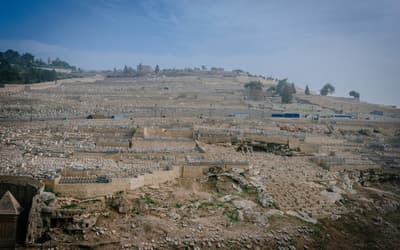
The Geology of Israel within the Biblical Creation-Flood Framework of History: 2. The Flood Rocks
Dr. Andrew A. Snelling • Dec. 15, 2010
The sedimentary strata that cover most of Israel are an obvious record of the Genesis Flood.
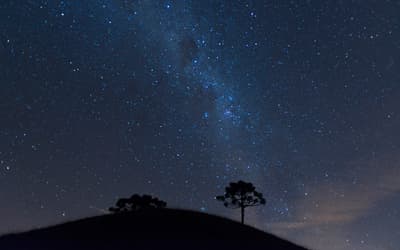
Anisotropic Synchrony Convention—A Solution to the Distant Starlight Problem
Dr. Jason Lisle • Sept. 22, 2010
Clear biblical teaching is that the universe is only a few thousand years old, so we should only be able to see objects within a radius of 6,000 light years.
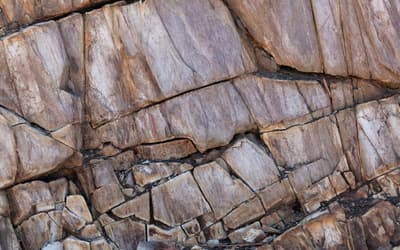
The Geology of Israel Within the Biblical Creation-Flood Framework of History: 1. The Pre-Flood Rocks
Dr. Andrew A. Snelling • Sept. 8, 2010
Understanding the geology of Israel would provide background to biblical events, and potential insights as to where and how they happened.

Is the Sodium Chloride Level in the Oceans Evidence for Abiogenesis?
Dr. Jerry Bergman • Sept. 1, 2010
This paper examines this assumption and finds the evidence shows that the levels of salinity in seawater and human blood are markedly different.

Numerical Simulation of Precipitation in Yosemite National Park with a Warm Ocean: Deep Upper Low and Rex Blocking Pattern Case Studies
Dr. Larry Vardiman , et. al. • July 14, 2010
Precipitation from two cold, winter orographic storms in Yosemite National Park and the Sierra Nevada was simulated with the NCAR mesoscale weather model called WRF.

A Proposed Bible-Science Perspective on Global Warming
Rod Martin • May 26, 2010
Media coverage of global warming has been increasing for over twenty years. Oddly, the church has had little to say on the issue and has made scant use of Scripture to evaluate the alleged problem.

Baraminological Analysis Places Homo habilis, Homo rudolfensis, and Australopithecus sediba in the Human Holobaramin
Todd Charles Wood • May 5, 2010
This present study should end charges against creationists that classification of australopiths as human or ape is arbitrary and meaningless.

Inherit the Wind
Dr. Jerry Bergman • March 31, 2010
Although the play was widely believed to be an accurate synopsis of the historical trial, often called the Trial of the Century, it grossly distorted the actual events of history.

Untangling Uniformitarianism
Dr. John K. Reed • March 17, 2010
Of the nine terms associated with uniformitarianism, seven can be replaced or eliminated, which refutes the accusation that diluvialists do not understand uniformitarianism.
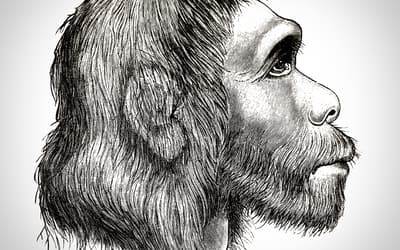
Those Enigmatic Neanderthals
Anne Habermehl • Jan. 13, 2010
Young-earth creationists rightly consider that Neanderthals were human, but are divided on various issues.

Systematic Theology Texts and the Age of the Earth
Dr. Terry Mortenson • Dec. 16, 2009
In the past few decades there has been a growing controversy in society and in the Church over evolution and the age of the earth.

Towards a Creationary Classification of Mutations
Jonathan Bartlett • Dec. 2, 2009
Mutations are normally classified according to their proximal effect on an organism’s fitness, whether beneficial, deleterious, or neutral.

Christian Theodicy in Light of Genesis and Modern Science
Dr. Terry Mortenson • Nov. 11, 2009
The problem of evil is always a challenge for the Christian witness. However, William Dembski’s “solution” proves logically and biblically unsound.

A Brief History of Intolerance in Modern Cosmology
Dr. Jerry Bergman • Jan. 21, 2009
A review of some recent well-documented cases of intolerance in the cosmology field illustrates a common problem in science. Many relate to the Big Bang theory.

The Origin of Oil—A Creationist Answer
John Matthews • Dec. 17, 2008
The dominant view of the origin of oil amongst western oil companies until 1969 was that it was due to the decay of living matter. Now other views are making themselves heard.

Radiocarbon Ages for Fossil Ammonites and Wood in Cretaceous Strata near Redding, California
Dr. Andrew A. Snelling • Dec. 10, 2008
Measurable radiocarbon has been detected in fossils from the earliest days of radiocarbon dating. When these data are put in perspective, their deadly significance to uniformitarianism is apparent.

Toward a Practical Theology of Peer Review
Todd Charles Wood , et. al. • April 9, 2008
The irony of the conflict over peer review is that peer review is poorly understood and criticized even in conventional journals.

Louis Pasteur’s Views on Creation, Evolution, and the Genesis of Germs
Dr. Alan L. Gillen , et. al. • Dec. 27, 2020
Shortly after Darwin published On the Origin of Species, Pasteur began to challenge the idea of spontaneous generation.

An Apology and Unification Theory for the Reconciliation of Physical Matter and Metaphysical Cognizance
Desmond Allen • Feb. 27, 2008
Because one is tangible and the other intangible, the physical and metaphysical are generally treated separately. But this dichotomy is illogical.

Microbes and the Days of Creation
Dr. Alan L. Gillen • Jan. 16, 2008
The world of germs and microbes has received much attention in recent years. But where do microbes fit into the creation account?
Young-Earth Creationism on Answers Research Journal
Young-earth creationism, alternately known as biblical creation, is a set of beliefs about earth history based on the assumption that the Bible provides an accurate historical record of earth’s origins and timescale. All secular scientists, as well as most Christian theologians, scientists, and laypeople, reject young-earth creationism as pseudoscientific—a religious belief of fundamentalist Christians refuted by science. Instead, these critics believe some or all the standard evolutionary story of the universe, earth, and life. Such old-earth Christians believe the scientific evidence overwhelmingly confirms at least the idea of millions of years of cosmic and earth history if not also the Neo-Darwinian theory of biological evolution (including human evolution). Therefore, these Christians favor one of the many old-earth views of Genesis held by professing Christians: gap theory, day-age view, analogical day view, framework hypothesis, cosmic temple view, theistic evolution, etc.
The aim of the professional, peer-reviewed research papers in Answers Research Journal (ARJ) is to deeply consider the biblical and scientific evidence in support of the Bible’s teaching that
- God created the universe and all it contains (including stars, galaxies, earth, plants, animals, and people, etc.) in six literal (24-hour) days a little more than 6000 years ago;
- He supernaturally created different kinds of plants and animals, as well as mankind (Adam and Eve), to reproduce (with variety) according to (or within) each unique kind (i.e., one kind does not change into a different kind) by natural procreation;
- He cursed the whole creation when Adam and Eve fell in sin, which brought into the creation both moral evil (murder, crime, wars, etc.) and natural evil (human and animal death, disease, extinction, and earthquakes, hurricanes, tsunamis, etc.);
- He destroyed the world with a global, yearlong, catastrophic Flood at the time of Noah, which transformed the surface of the earth; and
- He judged post-Flood people at the Tower of Babel by supernaturally creating new languages, which forced people apart to form nations and people groups.
These papers address these beliefs in light of biblical theology, biblical Hebrew and Greek scholarship, the inerrancy of Scripture, hermeneutics, and scientific evidence from anthropology, biology, genetics, geology, and astronomy. Biblically, they focus not only on the text of Genesis 1–11 but also on other Scriptures in the Old and New Testament that are relevant to the interpretation of Genesis.
